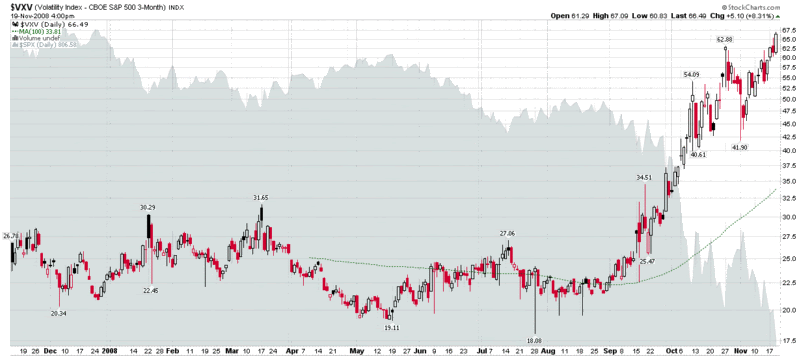In early October I set forth some of my ideas around how to think about volatility in A Conceptual Framework for Volatility Events. Today I want to briefly touch upon a topic that is tangential to that conceptual framework and closely linked to the VIX:VXV ratio that I talk about on a regular basis.
My thesis is simply this: the VIX looks out 30 days into the future and captures “event volatility” – or the volatility that is associated with events that are expected to occur in the next 30 days. These include Fed meetings, important economic data releases (employment report, consumer prices, retail sales, durable goods orders, GDP, etc.), earnings from bellwether stocks, even hurricanes, geopolitical crises and other events which can expect to cast a shadow over the course of the next 30 days.
The other half of the thesis is that the VXV (essentially a 93 day version of the VIX) always incorporates a full earnings cycle and a full economic data release cycle – so these events have very little impact on the VXV. As a result, the volatility that is relevant to the VXV is structural or systemic.
If this thesis is correct, it has some interesting implications for interpreting the VIX:VXV ratio and the VXV in isolation. For instance, yesterday’s new highs in the VXV, which occurred without the VIX even coming close to a new record, suggests that traders are currently pricing in record amounts of structural or systemic risk. In the long run, this "structural volatility" is a lot more dangerous than the event risk associated with the VIX.

[source: StockCharts]
0 comments:
New comments are not allowed.